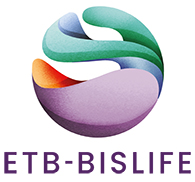In general, donated bone and tendon tissue is used to replace or repair a defective structure in the patient’s body. Donated bone tissue contains no living cells and usually serves as a matrix for the patient’s own surrounding tissue to form new bone tissue. Examples of where a surgeon can use donor bone:
- revision of a hip or knee prosthesis where, in some cases, donor bone is needed as a filler.
- where tumour tissue has been removed, repair of a defect in a patient’s bone tissue.
- surgical correction of the spinal column, where donor tissue is used to stabilise the spinal column.
- restoring the bone in the jaw, so that an implant can be placed.
Donor tendon and cartilage tissue is mostly used to restore joint function, for example:
- restoration of cruciate ligaments or menisci in the knee.
- restoration of joint function in the shoulder, elbow, wrist, or ankle.
- the restoration of tendon connections in the foot or hand.
Donated bone tissue is an effective and safe alternative to using the patient’s own tissue, has comparable biological characteristics, and is usually sufficiently available.
Donation helps enhance the quality of life of multiple recipients.
